-
 Bitcoin
Bitcoin $118300
-1.72% -
 Ethereum
Ethereum $3591
-0.69% -
 XRP
XRP $3.478
-3.53% -
 Tether USDt
Tether USDt $1.001
-0.01% -
 BNB
BNB $737.7
-0.54% -
 Solana
Solana $177.3
-2.40% -
 USDC
USDC $0.9999
-0.01% -
 Dogecoin
Dogecoin $0.2538
7.04% -
 TRON
TRON $0.3256
-0.85% -
 Cardano
Cardano $0.8332
-3.48% -
 Hyperliquid
Hyperliquid $44.80
-3.30% -
 Stellar
Stellar $0.4672
-6.09% -
 Sui
Sui $3.828
-5.98% -
 Chainlink
Chainlink $18.15
-3.41% -
 Hedera
Hedera $0.2655
-7.16% -
 Bitcoin Cash
Bitcoin Cash $517.5
-0.64% -
 Avalanche
Avalanche $23.89
-2.37% -
 Shiba Inu
Shiba Inu $0.00001519
-0.45% -
 UNUS SED LEO
UNUS SED LEO $8.973
0.13% -
 Toncoin
Toncoin $3.211
-2.54% -
 Litecoin
Litecoin $103.5
-3.58% -
 Polkadot
Polkadot $4.313
-3.90% -
 Uniswap
Uniswap $10.31
0.67% -
 Monero
Monero $325.4
-2.88% -
 Bitget Token
Bitget Token $5.049
3.51% -
 Ethena USDe
Ethena USDe $1.002
0.04% -
 Pepe
Pepe $0.00001346
-2.96% -
 Dai
Dai $0.9999
-0.02% -
 Aave
Aave $322.1
-2.93% -
 Bittensor
Bittensor $411.9
-4.70%
What is a state channel? How does it improve blockchain efficiency?
State channels enhance blockchain efficiency by processing transactions off-chain, reducing congestion, speeding up transactions, and lowering costs.
Apr 12, 2025 at 05:50 pm
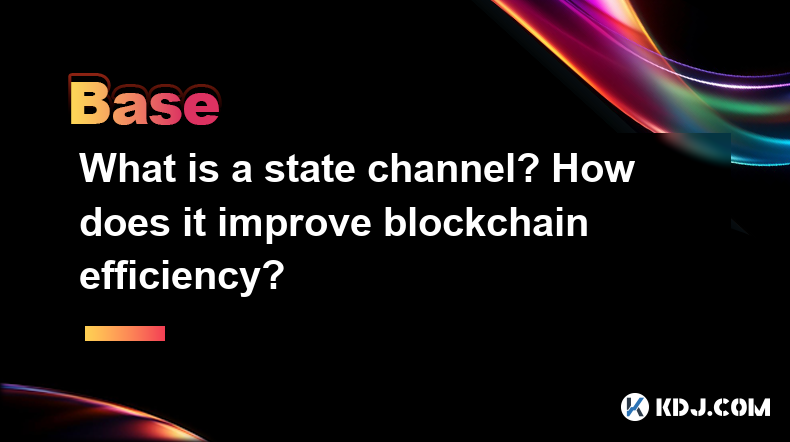
A state channel is a technique used in blockchain technology to enhance the efficiency and scalability of transactions. By allowing multiple transactions to be processed off-chain and then settled on the blockchain, state channels reduce the load on the network and speed up transaction times. This article will delve into what a state channel is, how it works, and how it improves blockchain efficiency.
What is a State Channel?
A state channel is a method that enables participants to conduct numerous transactions off the blockchain, thereby reducing the need for each transaction to be recorded on the blockchain. Essentially, it is a private communication channel between two or more parties where they can interact and update the state of their transactions without broadcasting every single update to the blockchain. Only the final state of the transactions, or a dispute, needs to be recorded on the blockchain.
State channels are particularly useful for applications that require high-frequency, low-value transactions, such as microtransactions or gaming. By processing these transactions off-chain, state channels help to alleviate the congestion that can occur on the blockchain, resulting in faster and cheaper transactions.
How Do State Channels Work?
The operation of a state channel involves several key steps:
- Setup: The participants agree to open a state channel and deposit a certain amount of cryptocurrency into a multisig wallet. This wallet requires signatures from all parties to authorize any transactions.
- Off-Chain Transactions: The participants can then conduct multiple transactions off-chain. Each transaction updates the state of the channel, and these updates are signed by all parties involved.
- Closing the Channel: When the participants are finished, they can close the channel by submitting the final state to the blockchain. The funds in the multisig wallet are then distributed according to the final state.
If a dispute arises, the blockchain can be used to adjudicate the dispute by examining the latest signed state that was agreed upon by all parties.
Benefits of State Channels
State channels offer several benefits that contribute to improving the efficiency of blockchain networks:
- Reduced Congestion: By processing transactions off-chain, state channels reduce the number of transactions that need to be recorded on the blockchain. This helps to alleviate network congestion and improve overall performance.
- Faster Transactions: Since transactions are processed off-chain, they can be completed much faster than if they were processed on the blockchain. This is particularly beneficial for applications that require near-instantaneous transactions.
- Lower Costs: Transactions processed through state channels typically incur lower fees than those processed directly on the blockchain. This is because the fees associated with off-chain transactions are usually lower than those associated with on-chain transactions.
- Scalability: State channels can significantly increase the scalability of a blockchain network by allowing it to handle a higher volume of transactions without compromising performance.
Examples of State Channels in Action
To illustrate how state channels work in practice, let's consider a few examples:
- Payment Channels: A payment channel is a type of state channel that allows two parties to send multiple payments to each other without recording each payment on the blockchain. For instance, Alice and Bob can open a payment channel and send multiple small payments to each other over time. When they are done, they can close the channel and settle the final balance on the blockchain.
- Gaming and Betting: In gaming and betting applications, state channels can be used to process numerous in-game transactions or bets off-chain. This allows for a smoother and more responsive gaming experience, as players do not have to wait for each transaction to be confirmed on the blockchain.
- Microtransactions: State channels are ideal for microtransactions, where small amounts of cryptocurrency are exchanged frequently. For example, a content creator might use a state channel to receive small payments from viewers for each piece of content they consume.
Implementing State Channels
To implement a state channel, developers need to follow a series of steps:
- Choose a Blockchain: Select a blockchain that supports state channels, such as Ethereum or Bitcoin with the Lightning Network.
- Develop Smart Contracts: Create smart contracts that will manage the state channel. These contracts should include functions for opening and closing the channel, as well as handling disputes.
- Set Up Multisig Wallets: Implement multisig wallets to hold the funds that will be used in the state channel. These wallets should require signatures from all participants to authorize transactions.
- Integrate Off-Chain Transaction Logic: Develop the logic for processing transactions off-chain. This includes updating the state of the channel and ensuring that all parties agree to each update.
- Test and Deploy: Thoroughly test the state channel implementation to ensure it functions correctly. Once tested, deploy the smart contracts and multisig wallets on the chosen blockchain.
State Channels and Blockchain Efficiency
State channels play a crucial role in enhancing the efficiency of blockchain networks. By allowing transactions to be processed off-chain, state channels reduce the load on the blockchain, resulting in faster transaction times and lower fees. This is particularly important for applications that require high transaction throughput, such as payment systems, gaming platforms, and microtransaction-based services.
Moreover, state channels help to improve the scalability of blockchain networks. As the number of users and transactions on a blockchain increases, the network can become congested, leading to slower transaction times and higher fees. By processing transactions off-chain, state channels can help to mitigate these issues and allow the blockchain to handle a higher volume of transactions without compromising performance.
Frequently Asked Questions
Q: Can state channels be used with any blockchain?
A: Not all blockchains support state channels out of the box. However, popular blockchains like Ethereum and Bitcoin (with the Lightning Network) do support state channels. Developers can also implement state channels on other blockchains by creating custom smart contracts and multisig wallets.
Q: Are state channels secure?
A: State channels can be secure if implemented correctly. The use of multisig wallets and signed state updates helps to ensure that all parties agree to each transaction. Additionally, the blockchain can be used to resolve disputes if necessary.
Q: How do state channels handle disputes?
A: If a dispute arises in a state channel, the participants can submit the latest signed state to the blockchain. The blockchain will then adjudicate the dispute based on the most recent state that was agreed upon by all parties.
Q: Can state channels be used for more than just payments?
A: Yes, state channels can be used for a variety of applications beyond payments. They are particularly useful for any application that requires frequent, low-value transactions, such as gaming, betting, and microtransactions.
Disclaimer:info@kdj.com
The information provided is not trading advice. kdj.com does not assume any responsibility for any investments made based on the information provided in this article. Cryptocurrencies are highly volatile and it is highly recommended that you invest with caution after thorough research!
If you believe that the content used on this website infringes your copyright, please contact us immediately (info@kdj.com) and we will delete it promptly.
- Crypto Market Mania: Ethereum Surges, Trump's Company Cashes In!
- 2025-07-19 12:30:13
- NFT Trading, Users, and the Quest for a Comeback: What's the Deal?
- 2025-07-19 12:30:13
- Baby Sex: Unpacking the Influencing Factors and Birth Sex Trends
- 2025-07-19 12:50:13
- Satoshi Nakamoto, Bitcoin, and Bill Gates: A New World Order?
- 2025-07-19 13:15:12
- Trump's GENIUS Act: A New Era for Stablecoin Regulation?
- 2025-07-19 12:50:13
- Render Crypto, DePIN, and GPU Rendering: The Future is Now, Baby!
- 2025-07-19 12:55:13
Related knowledge

What is the Inter-Blockchain Communication Protocol (IBC)?
Jul 19,2025 at 10:43am
Understanding the Inter-Blockchain Communication Protocol (IBC)The Inter-Blockchain Communication Protocol (IBC) is a cross-chain communication protoc...
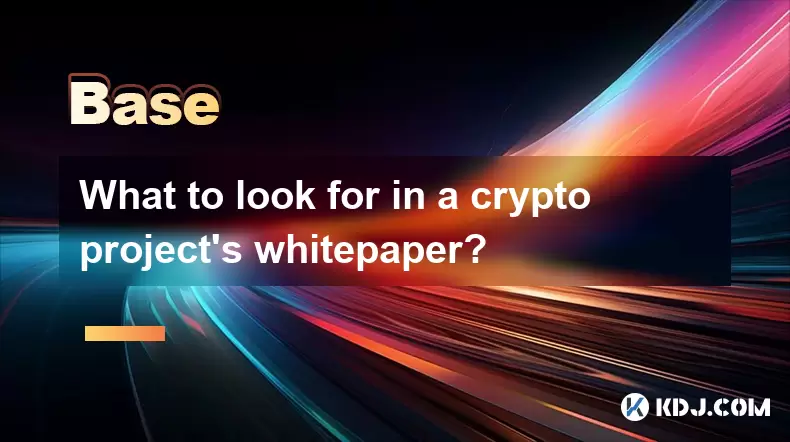
What to look for in a crypto project's whitepaper?
Jul 19,2025 at 01:42pm
Understanding the Purpose of a WhitepaperA whitepaper is a foundational document for any cryptocurrency project, often serving as the first point of c...
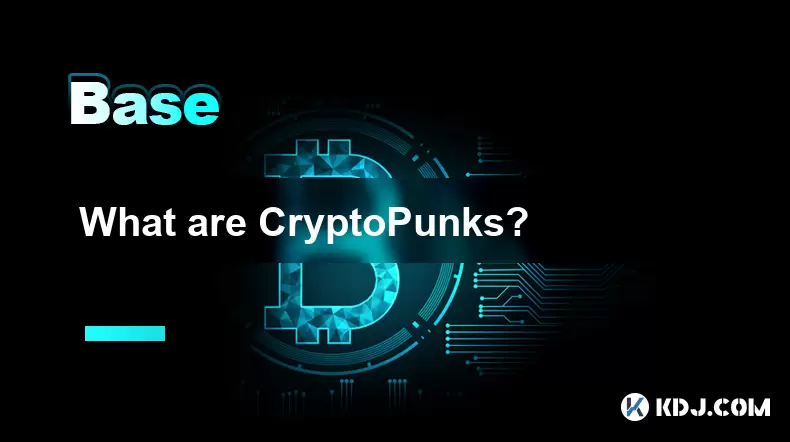
What are CryptoPunks?
Jul 19,2025 at 08:28am
Understanding the Basics of Bitcoin MiningBitcoin mining is the process through which new Bitcoin is introduced into circulation and transactions are ...
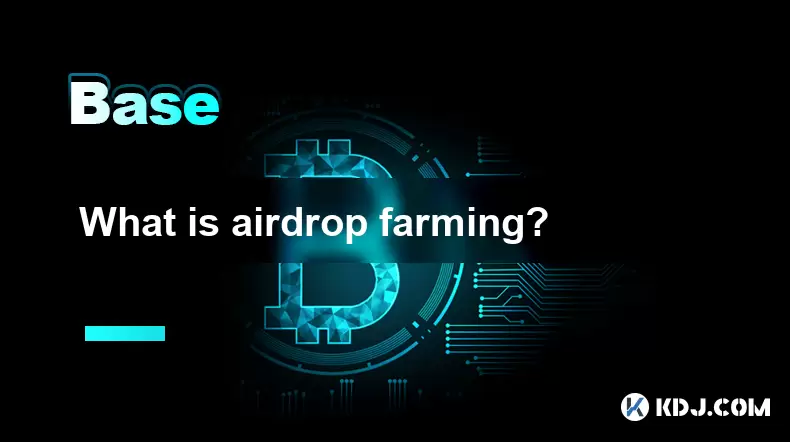
What is airdrop farming?
Jul 19,2025 at 03:56am
What Is Airdrop Farming?Airdrop farming is a term that refers to the process of accumulating tokens or coins through participating in airdrops and yie...
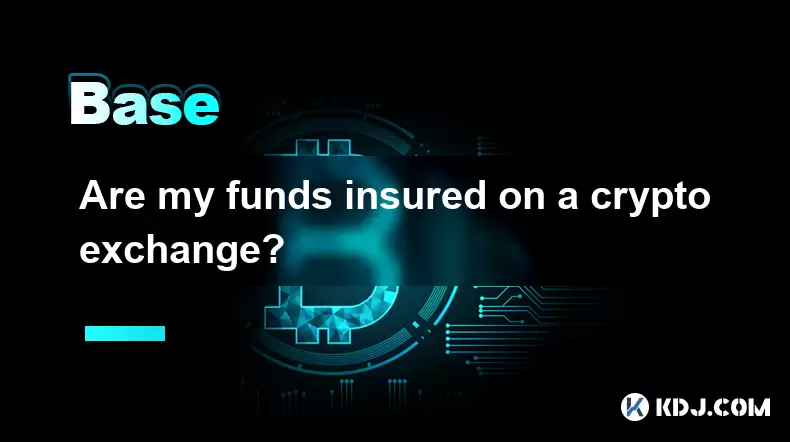
Are my funds insured on a crypto exchange?
Jul 19,2025 at 08:21am
Understanding the Concept of Fund Insurance on Crypto ExchangesWhen users store their digital assets on a cryptocurrency exchange, they often wonder w...

Can cryptocurrency be hacked?
Jul 19,2025 at 12:43pm
Understanding the Vulnerabilities in Cryptocurrency SystemsCryptocurrency, by design, is built on blockchain technology, which is inherently secure du...

What is the Inter-Blockchain Communication Protocol (IBC)?
Jul 19,2025 at 10:43am
Understanding the Inter-Blockchain Communication Protocol (IBC)The Inter-Blockchain Communication Protocol (IBC) is a cross-chain communication protoc...

What to look for in a crypto project's whitepaper?
Jul 19,2025 at 01:42pm
Understanding the Purpose of a WhitepaperA whitepaper is a foundational document for any cryptocurrency project, often serving as the first point of c...

What are CryptoPunks?
Jul 19,2025 at 08:28am
Understanding the Basics of Bitcoin MiningBitcoin mining is the process through which new Bitcoin is introduced into circulation and transactions are ...

What is airdrop farming?
Jul 19,2025 at 03:56am
What Is Airdrop Farming?Airdrop farming is a term that refers to the process of accumulating tokens or coins through participating in airdrops and yie...

Are my funds insured on a crypto exchange?
Jul 19,2025 at 08:21am
Understanding the Concept of Fund Insurance on Crypto ExchangesWhen users store their digital assets on a cryptocurrency exchange, they often wonder w...

Can cryptocurrency be hacked?
Jul 19,2025 at 12:43pm
Understanding the Vulnerabilities in Cryptocurrency SystemsCryptocurrency, by design, is built on blockchain technology, which is inherently secure du...
See all articles

























































































